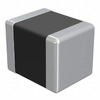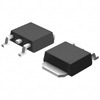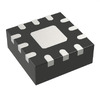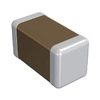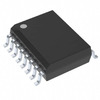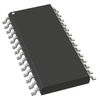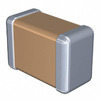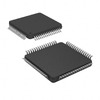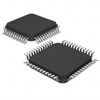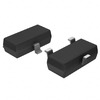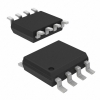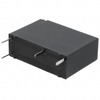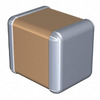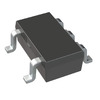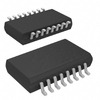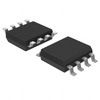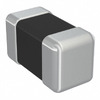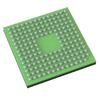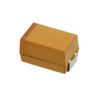Getting Started with Your Multimeter: Guide for Your Electronics Workshop
Whether you're experienced with electronics or just beginning to explore circuits, a multimeter is a tool you'll find very useful in your workshop. This handy device helps you measure things like voltage, current, and resistance, making sure your projects work safely and correctly. In this guide, we'll take you through the basics of using a multimeter, from understanding how it works to making your first measurements. By the end, you'll feel confident in your ability to troubleshoot and fix electronic problems.Catalog

Figure 1: Testing an Electrical Outlet with a Multimeter
Understanding the Multimeter
A multimeter measures electrical properties like voltage, current, and resistance in a circuit. It has a rotary dial for selecting settings, including AC/DC voltage, current (amperes), and resistance (ohms).
The device includes two probes—red for the positive side and black for the negative or ground. For voltage, place the probes at the points where you want to measure potential difference. For current, you may need to open the circuit so the current flows through the multimeter. To measure resistance, the multimeter sends a small current through the component and displays its resistance.
Types of Multimeters

Figure 2: Analog and Digital Multimeters
Multimeters measure voltage, current, and resistance in electrical circuits. The two primary types are analog and digital, each suited to different tasks.
Analog multimeters display measurements with a needle moving across a scale. They excel at showing changes in signals over time, making them useful for monitoring trends or fluctuations. However, they are generally less precise than digital models, and the accuracy of readings can be affected by how the scale is viewed.
Digital multimeters, or DMMs, use a digital screen to display measurements as clear numbers, reducing the chances of misreading. They are more accurate and user-friendly than analog models, often featuring auto-ranging, data hold, and computer connectivity. These features make digital multimeters the preferred choice for both professionals and hobbyists.
Key Functions of a Multimeter

Figure 3: Components of a Digital Multimeter
A digital multimeter measures voltage, current, and resistance. It has three primary ports: COM (Common), VΩ (Volts/Ohms), and A (Amps). Some models include an additional mA (milliamp) port for smaller currents.
Always connect the black probe to the COM (Common) Port which serves as the reference point for all measurements.
Volts/Ohms (VΩ) Port for the red probe when measuring voltage or resistance. Connect in parallel for voltage and ensure the circuit is off for resistance measurements.
Connect the red probe to the Amps (A) Port for current measurements. Place the multimeter in series with the circuit. Use the mA port for measuring smaller currents. Always use the correct port to avoid damage.
Using the Rotary Selector
The rotary selector on a Digital Multimeter (DMM) lets you choose the type of measurement you need. Here's what each setting does:
• AC Voltage (V~): Measures alternating current (AC) voltage, typically found in household outlets.
• DC Voltage (V–): Measures direct current (DC) voltage, commonly found in batteries and solar panels.
• DC Millivolts (mV–): Measures very small DC voltages, useful for sensitive electronics.
• Resistance (Ω): Measures the resistance of a component in ohms, indicating how much it resists the flow of current.
• Diode Test: Checks if a diode is functioning properly by measuring the forward voltage drop.
• Milliamps/Amps (mA/A): Measures current in milliamps (mA) or amps (A), depending on the circuit's current level.
• Microamps (µA): Measures very small currents in microamps, useful for low-power circuits.
Making Basic Measurements with a Multimeter
To get comfortable using a multimeter, it helps to start with simple tasks like measuring voltage, resistance, and current. These basic tasks will help you understand how the device works and how it can be used with different electrical parts. Here’s a clear and straightforward guide to performing these measurements correctly.
Measuring DC Voltage

Figure 4: Multimeter Setup for Measuring DC Voltage
Let’s start with measuring Direct Current (DC) voltage, which you might find in batteries and many electronic devices. First, connect the black probe to the COM port on your multimeter, and the red probe to the VΩ port. This setup is usually used for most measurements. Turn the dial to the DC voltage setting, which is usually marked with a "V" and a straight line. To take a measurement, place the red probe on the positive side of the device you’re testing and the black probe on the negative side. The voltage will then show up on the multimeter’s screen.
Measuring AC Voltage

Figure 5: Measuring AC Voltage with a Multimeter Connected to a 220V Outlet
Now, for Alternating Current (AC) voltage, which is common in household outlets, the setup process is similar. Again, connect the black probe to the COM port and the red probe to the VΩ port. Turn the dial to the AC voltage setting, which is marked by a "V" with a wavy line (~). To measure the voltage, touch the probes to the two terminals of the AC source. The voltage reading will show up on the screen, telling you the AC voltage of the source.
Measuring Resistance

Figure 6: Measuring Resistance with a Multimeter Set to Mega Ohms
When measuring resistance, make sure the component you are testing is not connected to any power source. This prevents damage to your multimeter and helps you get an accurate reading. Connect the black probe to the COM port and the red probe to the VΩ port. Turn the dial to the setting with the Ω symbol, which stands for resistance measurement. Place the probes on either side of the component you want to measure. The resistance value, shown in ohms (Ω), will appear on the screen. Keep in mind that measuring resistance while the component is still in the circuit can give you a wrong reading because other parts nearby might affect the measurement. It’s usually better to take the component out of the circuit before measuring it.
Measuring Current

Figure 7: Measuring Current with a Multimeter in a Circuit
Measuring current is different from measuring voltage or resistance because the multimeter needs to be placed directly into the circuit. Start by connecting the black probe to the COM port. The red probe should go into the port labeled "A" for higher currents or "mA" for smaller currents, depending on how much current you expect.
To measure current, you need to open the circuit at the point where you want to measure and insert the multimeter so the current flows through it. This allows the device to directly measure the current. Another way to measure current is by checking the voltage across a known resistor in the circuit and then using Ohm’s Law (V = IR) to calculate the current, where V is the voltage, I is the current, and R is the resistance.
Advanced Multimeter Features

Figure 8: Advanced Digital Multimeter
Some advanced digital multimeters (DMMs) include a built-in Low-Bandwidth Oscilloscope. This feature lets users see electrical signals as they change over time. While it’s not as powerful as a dedicated oscilloscope, it's useful for spotting issues like signal noise or sudden changes in the signal, especially when space or money is tight.
Some DMMs are made specifically for working with cars. They have special settings to measure the low voltage found in car circuits more accurately. They might also come with special probes or connectors for hooking up to car parts. These features help car technicians find and fix electrical problems in vehicles more easily.
Some multimeters include an LCR Meter, which measures inductance (L), capacitance (C), and resistance (R). This feature lets users check components like coils, capacitors, and resistors to make sure they are working correctly. It’s useful in designing and fixing electronic devices, allowing for accurate measurements without needing a separate tool.
Selecting a Basic Multimeter
When choosing a multimeter, focus on features that make it easy to use and provide accurate readings.
Continuity Testing with Buzzer Look for a multimeter with a sound alert for continuity testing. This feature helps you quickly check if a circuit is complete. When the circuit is connected correctly, the buzzer will make a sound, giving you immediate confirmation.
- Resistance Range Choose a multimeter that can measure resistance from 10 ohms to 1 Megaohm (1 MΩ). This range is suitable for most common tasks.
- Voltage Range Make sure the multimeter can measure both DC voltages (from 100 mV to 50 V) and AC voltages (from 1 V to 400 V). These ranges will cover most of your testing needs.
- Current Range For current measurements, select a multimeter with a range of 10 mA to 10 A, which should be enough for a variety of tasks involving both AC and DC currents.
Additional Features for Convenience Consider getting a multimeter with useful extras like an auto-off function, a built-in stand, a hold button, and batteries that you can easily replace. These features can make your work easier.
For those interested in deeper electronics work, additional features like auto-off (to save battery), a kickstand, a hold button, and the use of standard batteries (like 9V or AA) are beneficial.
Avoiding Common Mistakes
When using a multimeter, focus on staying safe to avoid any dangerous situations.
Always switch the test leads properly when you're measuring different things like current, voltage, or resistance. A common mistake is placing the test probes in the wrong spot, which can give incorrect readings or damage the device.
Check the device's limits and make sure the circuit you're testing is within safe levels. Never go beyond the multimeter's maximum input limit; doing so can harm the device or even cause injury.
Set the dial to the right function before you take a measurement. Incorrect settings can result in wrong readings and might even damage the multimeter.
Regularly check the probes and leads for any damage. Worn-out or exposed wires can cause short circuits or electric shocks. Replace any damaged parts before using the device.
Conclusion
Learning how to use a multimeter can make working with electronics easier and more effective. With the ability to measure voltage, current, and resistance, you can spot problems, ensure safety, and fine-tune your projects. This guide has shown you the basics, from how to use the multimeter’s main functions to some of the more advanced features. As you keep practicing, remember that the right tools, used in the right way, can make even complicated tasks feel manageable, helping you succeed in your electronics projects.
Frequently Asked Questions [FAQ]
1. What is the range function of a multimeter?
The range function on a multimeter lets you pick the right level for what you want to measure, like voltage. If you’re measuring voltage, you choose a range that covers the amount you expect to see. This helps you avoid errors or an "overload" message if the amount is too high for the selected range.
2. How to use a multimeter for beginners?
To use a multimeter, start by turning the dial to the correct setting (like voltage, current, or resistance). Plug the probes into the right slots. Then, touch the probes to the part of the circuit or component you want to measure. The multimeter will show a reading on the screen. It’s best to start with the highest range and then go lower to get an accurate reading.
3. What is the study of a multimeter?
Learning to use a multimeter involves understanding how to measure things like voltage, current, and resistance, and how to read the results. This also includes getting familiar with the different settings, ranges, and safety steps to follow.
4. What are the characteristics of a multimeter?
A multimeter can measure different electrical properties like voltage, current, and resistance. It usually has either a digital or analog display, a dial to select the range, and probes that connect to what you’re measuring.
5. What is the principle of a multimeter?
A multimeter works by comparing what it measures, like voltage or current, with a known reference inside the device. It then changes this into a number that you can see on the screen.
multimeter, electronics workshop, voltage measurement, current measurement, resistance measurement, electrical circuits, analog multimeters, digital multimeters, DMM, AC voltage, DC voltage, basic electrical measurements, advanced multimeter features, selecting a multimeter, electrical safety, troubleshooting electronics
About us
ALLELCO LIMITED
Read more
Quick inquiry
Please send an inquiry, we will respond immediately.

How to Maximize the Use of a Digital Multimeter in Electrical Testing?
on August 16th

The Role of Photoresistors in Electronic Circuits
on August 15th
Popular Posts
-

Understanding Power Supply Voltages in Electronics VCC, VDD, VEE, VSS, and GND
on June 13th 24175
-

USB-C Pinout and Features
on June 13th 21286
-

The Ultimate Guide to Wire Color Codes in Modern Electrical Systems
on January 1th 17465
-

TL494 Current-Mode PWM Controller IC
on January 1th 14733
-

Current Divider Circuits and Effective Use of the Divider Formula
on January 1th 13630
-

FET (Field Effect Transistor) Circuit Symbols
Field-Effect Transistors (FETs) are widely used in modern electronics and are found in everything from simple devices to complex digital systems. To work with these transistors effectively, it's helpful to understand the symbols that represent different types of FETs. These symbols do more than just show what the transistors look like—they also provide information about how each transistor works ...on January 1th 13440
-

Quality (Q) Factor: Equations and Applications
The quality factor, or 'Q', is important when checking how well inductors and resonators work in electronic systems that use radio frequencies (RF). 'Q' measures how well a circuit minimizes energy loss and impacts the range of frequencies the system can handle around its main frequency. In systems with inductors, capacitors, and tuned circuits, a higher 'Q' means the circuit focuses more on a spe...on January 1th 13393
-

Understanding and Building Op-Amp Based Peak Detectors
In the world of electronic circuit design, peak detectors are key tools for accurately analyzing and processing signal strengths. These circuits are designed to find and keep the highest signal amplitude, making sure the peak value is precisely captured and held as needed. Peak detectors are important in many fields, from improving audio quality in communication systems to aiding medical diagnoses...on June 13th 12497
-

LM741 Op-Amp: Features, Specifications, and Applications
The LM741 op-amp is a popular and flexible electronic component. This article goes over the pin layout, functions, specs, and different ways the LM741 can be used, while also comparing it to similar models like the LM358.Catalog1. What Is the LM741 Op-Amp?2. The LM741 Pin Configuration3. The LM741 Pin Functions4. Specifications of the LM7415. Features of LM7416. LM741 Circuit Applications7. LM741 ...on June 13th 12034
-

ST-LINK/V2: Pinout, Specifications, and Datasheet
This article takes you through the ST-LINK/V2, a well-regarded tool that amplifies connectivity and functionality. Key topics will cover its pinout configuration, delve into its 3D model, and spotlight specifications. Such understanding expands the horizons of STM microcontrollers in diverse applications. By grasping these interfaces and tools, you can transform embedded systems, opening doors to ...on January 1th 11579
